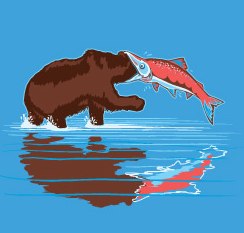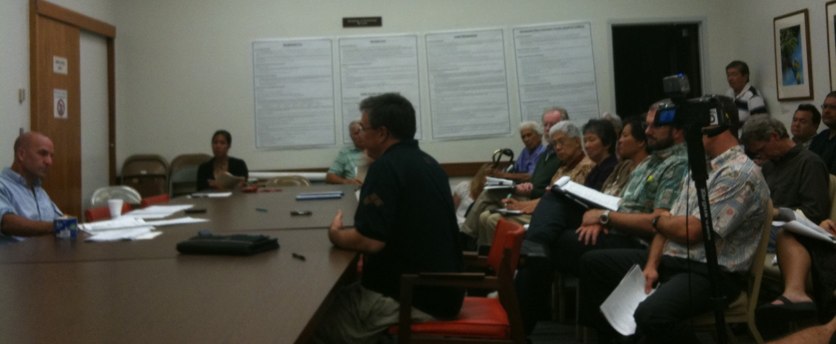Blog
News, updates, finds, stories, and tidbits from staff and community members at KAHEA. Got something to share? Email us at: kahea-alliance@hawaii.rr.com.
KAHEA begins work on seabed mining issues
The project aims to develop policy recommendations for Hawai'i's stakeholders to ensure seabed mining is carefully monitored and to raise public awareness about the impacts of seabed mining on Hawai'i's near shore waters. We intend to bring together Hawaiian cultural practitioners, academics, representatives of U.S. and Hawai'i government agencies, international representatives, and community members to discuss impacts of seabed mining on Hawai'i's oceans and identify specific ways to mitigate those effects.
What is Seabed Mining?
Seabed mining is a mineral retrieval process that takes place on the ocean floor. The ocean floor is "swept" or "plowed." Sediment is collected and pumped into a vessel via a lift system. The sediment is shifted and minerals are extracted. The sediment is then pumped back into the ocean bottom.
What are the Environmental Impacts of Seabed Mining?
Scientists estimate that seabed mining will affect thousands of different species from fish to crustaceans that these impacts will be very long-lasting. The likelihood is high that both the immediate area and other interconnected ecosystems, including Hawai'i's near shore fisheries and coral reef systems, will be affected.
Why is this project important?
Seabed mining has long been seen in the state of Hawai'i as an under-utilized economic driver. As of 2014, at least one company is ready to begin seabed mining off the coast of Papua New Guinea. Closer to Hawai'i, mineral exploitation is active in the Clarion- Clipperton Fracture Zone, an area that begins approximately 500 miles south of Hawaii and runs to Mexico's coast.
Over the past year, KAHEA has heard growing concern from supporters over the prospect of seabed mining in the Clarion-Clipperton Fracture Zone and the potential adverse impacts that such operations could have on the seas closer to Hawai'i. Because this area is located in international waters, state and federal governments may not have the tools to regulate and monitor the use of ocean resources in this area. KAHEA, using its model of alliance-building, seeks to foster innovative ways to ensure that the natural resources of the region are preserved and ocean health maintained.
Monk Seals: Critcal habitat, Critical discussion
In the last few weeks, we’ve received letters of strong support and strong opposition to the proposed rule on critical habitat for the Hawaiian monk seal. We hope this blog will open up some safe space for discussion.
Ahi Feedlot Abandons Ship!

Mahalo to all who took action in the last few months, asking the Army Corps of Engineers to hold a public hearing on a permit to allow Hawai’i Ocean Technology, Inc. (HOTI) to build a proposed 247-acre ahi tuna feed lot off the Kohala Coast. 100% of the feed for this project would be imported from fisheries in places like Peru, and 90% of the tuna they feedlot will be exported to Japan and the continental U.S. (Does this sound like local food sovereignty to you? Not so much.)
Last week, we got news that HOTI has withdrawn their permit application. They may still be looking to do a smaller one-cage “experimental” operation. We’ll keep you updated. But for now, count this is a victory for the ocean. Mahalo for your action! Thanks to you, we’re a little closer today to a collective vision of food sovereignty and a functioning food system for Hawai’i. To learn more or to join the hui in support of pono aquaculture, you can go to www.ponoaqua.org
Monster Salmon. And not in a good way.

They came for our taro. Is it any surprise that fish is next on the list? Today, federal officials in the U.S. are considering approval of the first genetically modified fish. GMO-salmon. Ick.
Salmon are sacred. It’s time to show our solidarity for indigenous peoples, first nations, and fishing and nearshore communities the world over. We’re a fish and poi culture, and we’ve got to be concerned about genetic modification of native species. Genetic modification is a part of a broken industrial food system that just doesn’t work. It isn’t serving communities, farmers, fishers, or consumers. We want sovereignty… over what’s on our plates. And we’re saying no to untested, unlabeled GMO foods.
From our friends at Food and Water Watch:
Franken-Fish have won the race to be the first genetically engineered animal approved for human consumption. The aquaculture industry has genetically engineered a fish that grows at twice the normal rate, so they can get it to market sooner and make more money.
The scary thing is, the FDA doesn’t do its own testing of genetically engineered animals, it relies on information provided by the company that wants approval. And because GE salmon are being considered as a new animal drug, the process isn’t focused on what happens to people who eat genetically engineered animals. So on top of the health concerns posed by raising salmon in crowded factory fish farms that rely on antibiotics and other chemicals, the FDA could be adding the unknown risks of GE salmon to the mix.
The FDA is the same agency that’s in charge of overseeing the egg industry, and we see how well they’ve done that job. The FDA does not have the capacity to ensure the safety of food that is not genetically engineered, they certainly should not be in charge of allowing the first GE animal into our food supply.
We’ve got just 12 days until the FDA takes formal steps to approve GE salmon, so it’s up to us to demand that President Obama direct the FDA to reject this request.
Take action to stop this mutant fish from reaching your plate:
http://action.foodandwaterwatch.org/p/dia/action/public/?action_KEY=4693
(Illustration at top is by the talented Glenn Jones at threadless.com. His GE Salmon shirt is now sold out!)
No Public Speaking Allowed?
We attended the Honolulu scoping meeting on the Navy’s planned expansion of sonar and underwater munitions testing and training activities two weeks ago. We’re still working on processing the information and our thoughts about the process. In the meantime, we thought we’d share these thoughts from Uncle Jim on Moku o Keawe about their experience in Hilo:
From Uncle Jim Albertini:
Tonight’s (8/26/10) EIS Scoping Meeting on Navy expansion plans for Hawaii and the Pacific was more hardball than the Marines similar meeting of 2 days ago. (Then again, at the Marines meeting we had retired Marine Sergeant Major, Kupuna Sam Kaleleiki, to open the path with a pule and the initial public testimony.)
The Navy EIS personnel weren’t nearly as respectful of the right to public speaking and the community being able to hear each others concerns. Some of the Navy team were downright arrogant, insulting and contemptuous. Initially the Navy wasn’t going to allow us to bring our portable sound system into the Hilo H.S. cafeteria to hold a citizen public hearing. Finally with police presence brought in, the Navy yielded the last hour of the planned 4-8PM event to our citizen hearing.
Some of the Navy EIS team were blatantly rude in not listening to community speakers and carried on their own conversations. Before the public testimony, we invited all present to join hands in a pule and asked for mutual respect, and open minds and hearts.
The Navy refused to have any of their personnel take notes to make the public comments part of the official record of scoping concerns. Community people were very respectful of the Navy personnel as human beings, but the aloha spirit wasn’t returned by many of the Navy people present. Too bad.
Many of the Navy people were hard set to their format. Tour the science fair stations, and If you wanted to comment, put it in writing or type it into a computer. We were told over and over. This is not a public hearing. No public speaking is allowed.
Reading: Environment Hawai'i, August Issue
We got our August issue of the excellent Environment Hawai’i in the mail the other day!
On DAR’s proposed list of activities that they believe should be exempted from doing environmental assessment, they write, “DAR’s proposed list appears to exempt every type of permit and license issued by the division.” Including live rock and coral collecting permits and all permits for Papahanaumokuakea in the Northwestern Hawaiian Islands.
There is also great coverage of Waimanalo Gulch violations and wet-noodle enforcement from the Department of Health, and excellent reporting on this summer’s WESPAC meetings.
Mahalo to Pat and Teresa for their excellent investigative reporting! You can support Environment Hawai’i by subscribing today!
Laughable public process: changes to conservation protections

Hearings officer Sam Lemmo, the administrator for OCCL, made a point of assuring the room that the final regulations would definitely be different from what we are seeing tonight based on all of the great input they had been getting. (Did you just feel that gentle pat on the top of your head? I did.)
We pressed Sam on when we might actually see the final regulations. Generally speaking, the agenda for the Board of Land and Natural Resources is posted a mere six-days before the Board decides an issue. Will we only get six days to review the final version of the rules that are supposed to be protecting our conservation lands for at least the next 15 years?
In response, Sam chuckled and said “good question.” The audience laughed. I laughed, too — because what do you do when someone laughs in your face? Despite all the laughter it was a sad moment.
It is sad when regulations as important as these are given but the bare minimum of study and public process. We are talking about 2 million acres of conservation lands — our watersheds, nearshore waters… the important places. Conservation lands are 51% of the crown and government lands that are supposed to be held in the “ceded” lands trust for Native Hawaiians and the people of Hawaii — we have an obligation to protect these assets.
From what I hear from the old-timers, when these rules were changed 15 years ago, there was a public blue ribbon panel convened to advise the division on improving the regulations. Today, DLNR is unilaterally proposing major revisions. What gives? Where is the expert panel? The thoughtful study? The reasoned assessment?
In response to my quote on the need for “a blue ribbon panel” in the Star-Advertiser on Thursday, several insiders came forward at the hearing to thank Sam for DLNR’s history of work on these rule changes that were, in their words, “a long-time coming.” So long in coming, in fact, that the public just heard about them. These rules saw the first light of day in July and are expected to be approved before December. Coincidentally, that’s right before the Lingle Administration leaves office. Feels more like a 50-yard dash than a “long-time coming” to me.
Both in and out of public hearings, we have heard Sam say, at least 20 times (no exaggeration, I seriously counted), “Good question, that wasn’t what I intended” in response to questions and concerns about the staff’s proposed changes. I don’t know about you guys, but if what I write down isn’t what I meant to say, its usually because I was in a rush and didn’t take the time to think about the implications… welll… that kind of pondering is exactly what we need right now.
Good changes, bad changes, the bottom line is these changes need more thought. We should not let the timeline for the end of an administration drive the schedule for amending some of the most important protections in our islands.
Want to feel like you were there? Here is a link to notes from the Honolulu public hearing on August 12, 2010.
Want to participate in the process? Sign up for KAHEA’s action alert network, later this week we’ll send out an easy-to-use comment form by email.





